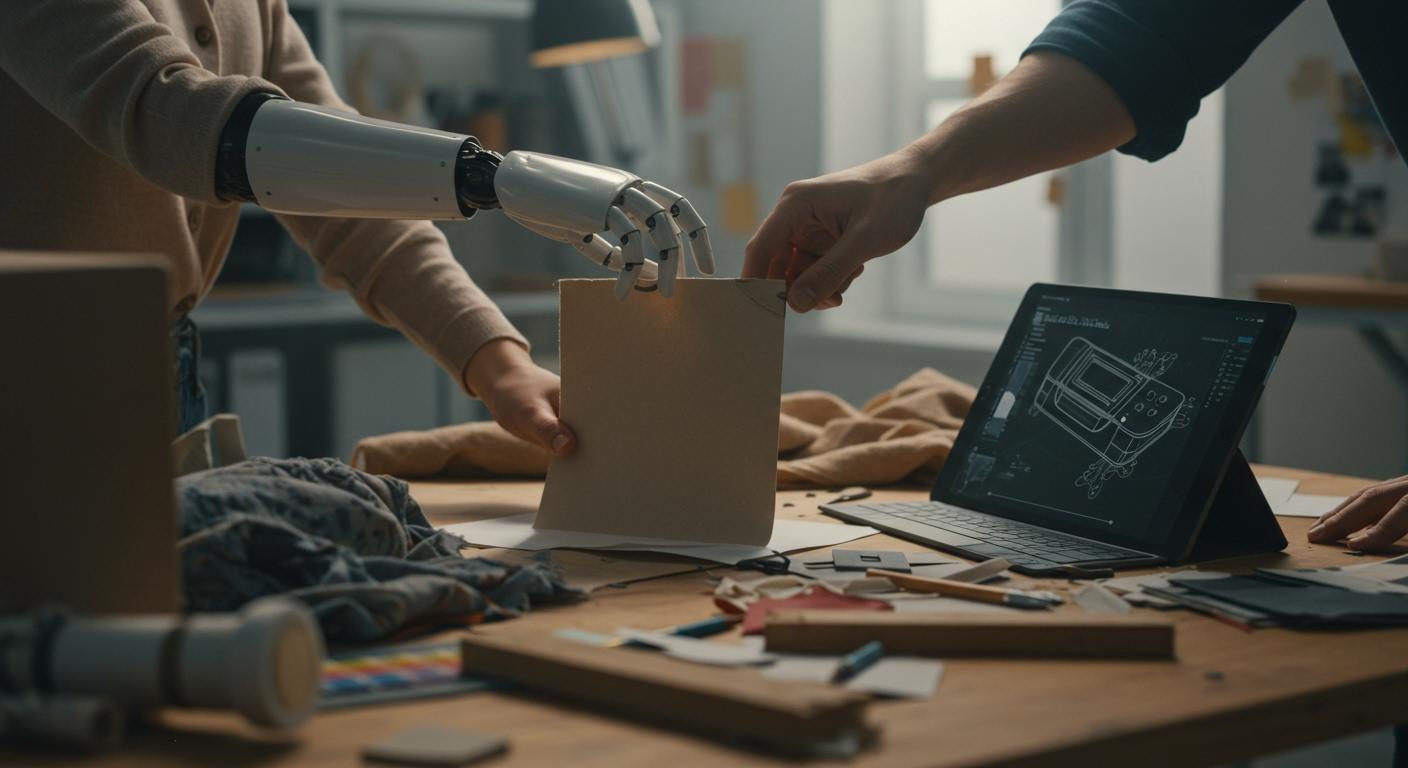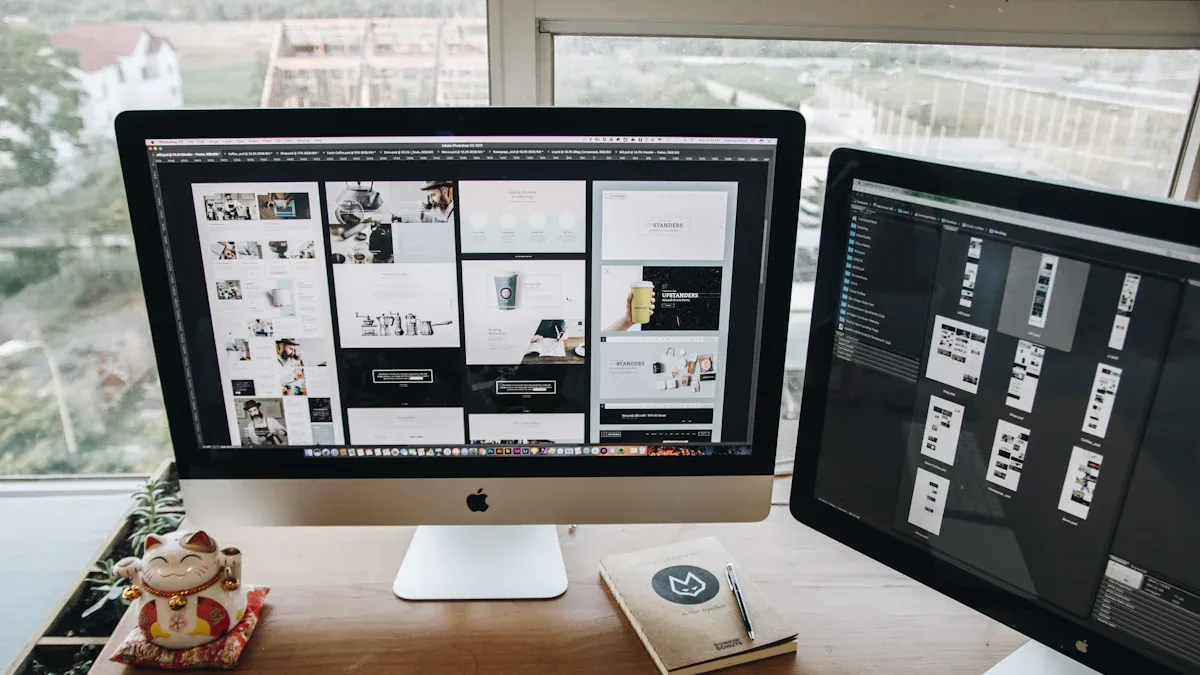
The fashion industry faces a significant challenge with textile waste. AI presents a powerful solution for designers. It turns unsold inventory from a liability into a creative asset. This innovation is crucial for fashion sustainability.
The fashion industry generates about 92 million tonnes of textile waste each year. It also loses an estimated $500 billion annually from under-wearing and not recycling clothes.
AI for upcycling empowers designers to rethink materials. Many leaders in fashion already see the potential of AI. Approximately 75% of fashion executives are adopting AI tools for inventory management. This embrace of technology supports creative upcycling and overall sustainability. The rise of ai sustainable fashion shows a clear path forward.
Tackling Overproduction at the Source
The most effective way to manage surplus stock is to prevent its creation. AI offers powerful tools for designers and brands to stop overproduction at its origin. This proactive approach is fundamental to achieving waste reduction and building a more efficient fashion business. It shifts the industry from a reactive to a predictive model.
AI-Powered Demand Forecasting
Accurate forecasting is the first line of defense against excess inventory. Traditional methods often fail to keep up with fast-changing trends. AI changes this by analyzing huge amounts of data. It processes historical sales figures, web search trends, and social media conversations. This comprehensive analysis allows AI to identify emerging patterns that humans might miss. For example, an AI tool can spot a term like 'LumberJane' trending on TikTok and help a brand quickly tag relevant products, turning social buzz into sales.
Major fashion companies already use this technology. Brands like H&M and Zara leverage AI to predict demand with greater precision. This helps them optimize stock levels, minimize textile waste, and ensure popular items are available. The use of AI makes forecasting a science, not a guess.
Pro Tip: For new products without sales history, AI analyzes data from similar items and current market sentiment. This greatly reduces the risk involved in launching novel fashion designs.
Enabling On-Demand Production
The ultimate solution to overproduction is the on-demand model. This strategy flips the traditional system. Instead of 'produce, then sell', brands 'sell first, then produce'. This inherently eliminates unsold stock. The on-demand approach is a cornerstone of ai sustainable fashion, directly linking production to customer orders. This method is not just about reducing waste; it also improves profitability by cutting storage and disposal costs.
Specific AI technologies make this model a reality for the modern fashion industry. These tools streamline the process from order to delivery.
| AI Technology | Function |
|---|---|
| AI-controlled Robotics | Precisely assemble garments, increasing efficiency. |
| 3D Weaving Tech | Weaves garments directly into shape, minimizing material waste. |
| Virtual Prototyping | Creates 3D digital samples, eliminating physical sample waste. |
| AI Supply Chain Tools | Optimize factory operations and delivery times in real-time. |
These AI innovations empower brands to produce exactly what is needed. They support a leaner, more responsive, and sustainable fashion ecosystem.
Analyzing Surplus Stock with AI

Even with the best forecasting, some surplus stock is inevitable. The next step is to analyze this inventory not as waste, but as a resource. AI gives designers the tools to audit and understand their surplus fabric with incredible detail. This process transforms the current methods of handling surplus fabric from a costly problem into a creative opportunity.
Automated Inventory Audits
Manual inventory counts are slow and prone to error. AI automates this process, providing a clear, real-time picture of all surplus fabric. AI systems offer detailed analytics for fashion brands. They track the entire product life-cycle. This allows for smarter business decisions. For example, AI can analyze stock levels and demand forecasts to suggest moving older surplus fabric to a different location where it might sell. This prevents textile waste and reduces the need for markdowns.
AI-powered inventory tools offer many features for fashion businesses:
- SKU-level tracking for sizes, colors, and styles
- Real-time inventory dashboards
- Automated stock replenishment across warehouses
This level of control helps companies manage their surplus fabric effectively.
Identifying Redesign Potential
After auditing the stock, the creative work begins. AI helps designers see the hidden potential in every yard of surplus fabric. This is a key part of ai sustainable fashion. Computer vision, a type of AI, can scan and categorize materials with precision. It identifies fabric type, color, and condition from images or sensors. This is crucial for identifying upcycling opportunities.
Advanced AI uses technologies like Near-Infrared (NIR) and Raman Spectroscopy. These tools create a molecular 'fingerprint' of each piece of surplus fabric. The AI then interprets this data. It classifies the material and helps designers plan their upcycling projects. This intelligent sorting turns potential textile waste into the foundation for the next fashion innovation.
Creative Ideation: AI for Upcycling

Once a designer understands their surplus fabric, the next phase is creative transformation. AI acts as a powerful co-creator in this process. It helps designers brainstorm and visualize new possibilities for their existing materials. This partnership turns the challenge of surplus fabric into an exciting design opportunity.
AI-Assisted Sustainable Design
Generative AI tools like Midjourney and DALL-E are changing the game for sustainable design. A designer can feed the AI specific data about their surplus fabric. This includes information on material type, color palettes, and fabric quantity. The AI then generates countless visual concepts. This process provides a burst of inspiration for upcycling projects.
A designer might give an AI a detailed prompt. For example, they could ask it to design a stylish collection using only reclaimed textiles and repurposed plastics from their inventory. The prompt can instruct the AI to highlight the unique origin of the surplus fabric. This could involve using graphic prints from old garments or creating new patterns from blended fibers. This method of ai for upcycling ensures that new designs are both innovative and rooted in sustainability.
AI helps minimize waste throughout the creative process.
- The AI analyzes and suggests eco-friendly materials for any new components needed.
- It explores many design options to create structures that use less surplus fabric.
- AI tools integrate lifecycle assessment early, giving designers real-time feedback on environmental impact.
This approach to ai sustainable fashion makes the design phase smarter and more responsible. It ensures precise calculations for material quantities, which reduces excess cuts from the surplus fabric.
Virtual Prototyping and Fit
After ideation, the next step is bringing a design to life. Traditionally, this required creating multiple physical samples. This process was slow, costly, and created significant textile waste. AI-powered 3D modeling software offers a better solution. It allows designers to create and test virtual prototypes, a core practice in modern fashion. This digital approach can reduce the need for physical prototyping by 60-80%.
Software tools like Style3D AI and Onbrand AI are at the forefront of this shift. They use advanced AI algorithms to create high-fidelity 3D simulations of garments. Designers can see how their upcycling design looks and moves before cutting a single piece of surplus fabric. This technology offers many benefits:
- It drastically reduces material waste from samples.
- It cuts down on production and shipping costs.
- It speeds up the entire development cycle, getting fashion to market faster.
An AI can accurately simulate how a garment made from surplus fabric will fit on different body shapes and sizes. The AI accounts for fabric behavior like drape, fold, and stretch. This ensures the virtual fitting is realistic. This capability is a huge step forward for ai sustainable fashion and ai for upcycling. It helps brands create inclusive fashion that truly fits, turning surplus fabric into desirable, well-made clothing.
Optimizing for a Circular Fashion Model
Creating a circular fashion model means designing out waste from the very beginning. AI provides the tools to make this a reality. It helps designers optimize every step, from cutting patterns to ensuring the final product will sell. This approach builds a truly circular system where resources are continuously reused.
Zero-Waste Pattern Making
A huge amount of fabric is wasted before a garment is even sewn. AI-driven pattern-making software tackles this problem directly. The AI analyzes fabric layouts and suggests the most efficient cuts. This process ensures maximum material usage and reduces the amount of leftover scraps. It is a key step toward greater sustainability in fashion.
Shelly Xu's platform, SXD AI, is a leader in this space. The AI creates 'living patterns' that can be adapted to different sizes and styles without creating fabric waste. This technology has helped partners reduce fabric use by up to 46%, saving money and resources.
This intelligent approach to pattern making is a core part of ai sustainable fashion. It turns a complex manual task into a fast, automated process.
Predicting Market Viability
An upcycled design is only successful if people want to buy it. AI helps designers predict the commercial success of their circular fashion collections. The technology analyzes massive amounts of data from social media, online searches, and sales history. This helps designers understand what eco-conscious consumers are looking for.
AI can even spot trends before they become mainstream.
- AI Trend Agents allow brands to see new consumer interests months in advance.
- One brand used this AI to identify the 'quiet luxury' trend 12 weeks early.
- This foresight helps designers create relevant collections using eco-friendly materials that are guaranteed to resonate with the market.
By using predictive analytics, designers can make data-driven decisions. This ensures their upcycled fashion is not just innovative but also profitable, closing the loop on a successful circular model.
AI empowers designers at every stage, from smart forecasting to creative upcycling. This technology is the key enabler for fashion to move from a linear system to a circular one. The practice of ai for upcycling is central to ai sustainable fashion.
Designers should explore accessible AI tools. This is a strategic move for brand innovation and environmental sustainability.
The partnership between designer creativity and AI intelligence is building a more resilient, resourceful, and circular future for fashion. This synergy makes circular fashion the new standard for the fashion industry.
FAQ
How can small brands start using AI?
Small brands can begin with accessible tools. Many generative AI platforms offer free trials for design ideation. Designers can also explore entry-level inventory software. These tools provide a low-risk entry into ai sustainable fashion, helping brands learn and grow.
Is AI expensive for fashion designers?
The cost of AI varies. While some enterprise systems are expensive, many affordable options exist. Designers can find subscription-based software and free tools for specific tasks. This makes AI technology accessible to brands of all sizes, not just large corporations.
Does AI replace a designer's creativity?
No, AI does not replace creativity. It acts as a powerful assistant. AI handles data analysis and generates ideas, freeing designers to focus on their creative vision. The designer makes all final decisions, guiding the technology to achieve their goals.
Key Takeaway: AI is a collaborator. It enhances a designer's skills by providing data-driven insights and new creative pathways for upcycling projects. 💡
What is the main benefit of AI for upcycling?
The main benefit is turning waste into value. AI helps designers see the potential in surplus fabric. It speeds up the process of creating new, desirable products from old stock. This approach reduces waste and creates new revenue opportunities.
See Also
Innovative AI Solutions: Sustainable Fashion for a Greener Tomorrow
Optimizing Returns: Smart AI for Efficient Fashion Retail Operations
Transforming Apparel: Strategic Paths from Manufacturing to Branding Success
Robotic Insights: Understanding Global Trends in Fashion Demand
Top Platforms: Reselling Unwanted Items Beyond Mercari in 2025